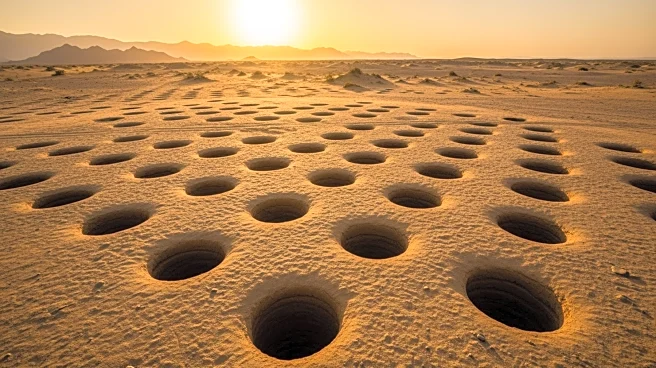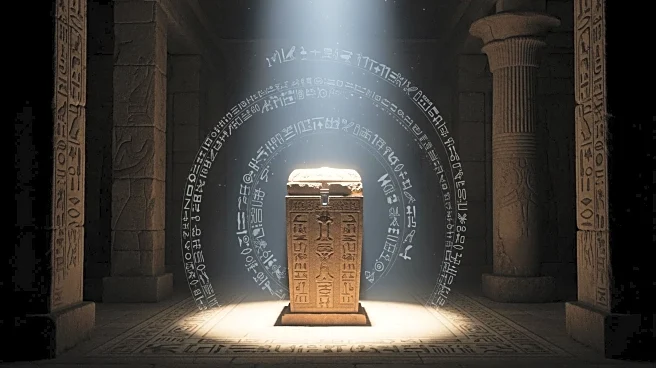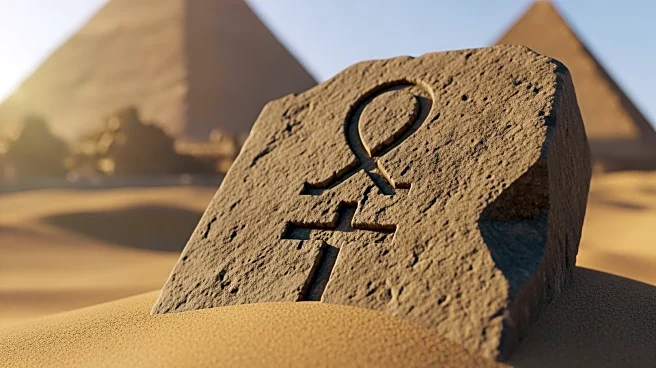What's Happening?
Recent archaeological research has revealed that the Monte Sierpe site in the Andes, consisting of approximately 5,200 aligned holes, may have functioned as an ancient system for accounting and exchange.
This site, known as 'serpent mountain' or the Band of Holes, stretches 1.5 kilometers and dates back at least 700 years. Researchers used drone mapping and sediment analysis to uncover numerical patterns and plant remains, suggesting the holes were used for depositing goods. The site's organization mirrors the structure of an Inca khipu, a knotted-string device used for record-keeping, indicating its potential role in indigenous accounting practices.
Why It's Important?
The discovery of Monte Sierpe's function as a marketplace and accounting system provides insight into how pre-Hispanic Andean societies managed resources and administered large populations without currency or writing systems. This finding challenges previous theories about the site's purpose, such as defense or water collection, and highlights the sophisticated methods used by the Chincha Kingdom and later the Inca Empire for economic transactions and tribute collection. Understanding these ancient practices can offer valuable perspectives on the development of complex societies and their economic systems.
What's Next?
Further research may focus on exploring other similar sites in the Andes to determine if they served similar functions. Archaeologists might also investigate the broader implications of these findings on our understanding of Inca economic systems and their influence on contemporary indigenous practices. Additionally, there could be efforts to preserve and protect Monte Sierpe as a significant cultural heritage site, ensuring its historical importance is recognized and maintained.
Beyond the Headlines
The discovery of Monte Sierpe's role as an accounting system raises questions about the ethical implications of interpreting ancient sites and the narratives constructed around them. It also highlights the importance of interdisciplinary approaches in archaeology, combining technology with traditional methods to uncover new insights. This research may inspire further studies into the cultural and social dynamics of ancient Andean societies, offering a deeper understanding of their legacy.











